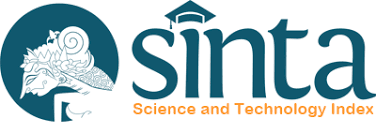Peranan Modal Sosial Terhadap Pengembangan Sistem Agroforestri di Kabupaten Bulukumba
DOI:
https://doi.org/10.24259/jhm.v11i1.4107Keywords:
Modal sosial, agroforestri, berkelanjutanAbstract
Agroforestry is a concept of sustainability that has various aspects in the implementation and the social capital is one of the important aspect. This study aims to explain how social capital is applicable in community agroforestry management In Kahayya Village, Kindang Sub-district, Bulukumba District. This research uses descriptive qualitative method by using questionnaire method and structured interview with 93 respondents (farmers) who manage the land by agroforestry method. The results indicate that some aspects of social capital, such as social institutions and the level of public confidence shows good value, will be treated in terms of social networking is still showing a bad condition. The level of social capital in agroforestry management in Kahayya Village is at the elementary level of social capital. This can be seen from the condition of the community in the village of Kahayya that still tends to individual welfare but in some cases they are still able to cooperate with other communities if conditions can be mutually beneficial. Such social capital conditions may be used by relevant Institutions and agencies to support sustainable land management through agroforestry patterns as well as institutional strengthening which aims to further increase social capital under adverse criteria.
References
Coleman, James. (1990). Foundation of Social Theory. Cambridge, Mass.: Harvard University Press, Engla
nd
Chambers, R., & Conway, G. R. (1991). Sustainable Rural Livelihoods: Practical Concepts for The 21st Century. IDS Discussion Paper 296.
Ellis, F. (1998). Household Strategies and Rural Livelihood Diversification . The Journal of Develovement Studies, 1-38.
Febriyano, I. G., Suharjito, D., Darusman, D., Kusmana, C., & Hidayat, A. (2014). The Roles and Sustainability of Local Institution of Mangrove
Management in Pahawang Island . Jurnal Manajemen Hutan Tropika, 69-76.
Guillen, L. A., Wallin, I., & Brukas, V. (2015). Social capital in small-scale forestry : a local case study in Southern Sweden. Procedia Environmental Sciences, 21-28.
Julia, E., & Amadou, K. (2005). Participatory Landscape/Lifecape Appraisal. Conflict, Social Capital and Managing Natural Resources (pp. 77-88). Oxford: CABI Publishing.
Nawir, M., Taksirawati, I., & Baharuddin (2017). Pemanfaatan Tanaman Pangi (Pangium Edule Reinw) pada Lahan Agroforestri Desa Watu Toa Kecamatan Marioriwawo Kabupaten Soppeng. Jurnal Hutan dan Masyarakat 9 (2): 123-130.
Putri, R. W., Qurniati, R., & Hilamnto, R. (2015). Karakteristik petani dalam pengembangan hutan rakyat di Desa Buana Sakti Kecamatan Batanghari Kabupaten Lampung Timur. Jurnal Sylva Lestari, 89-98.
Nasir, M. (1983). Metode Penelitian. Jakarta: Ghalia Indonesia.
Putnam, R. (1995). The Prosperous Community - Social Capital and Public Life”. American Prospect. Washington DC: World Bank
Prayitno, H., & Arsyad, L. (1987). Petani desa dan kemiskinan. Yogyakarta: BPFE.
Rauf, A. (2004). Agroforestri dan Mitigasi Perubahan Lingkungan. Makalah Falsafah Sains Sekolah Pasca Sarjana IPB
Uphoff, N. (2000). Understanding Social Capital : Learning From The Analysis And Experience Of Participation In Dasgupta And Serageldin (eds). 2000 Social Capital : A Multifaceted Perspective. Washington DC: The Word Bank.












